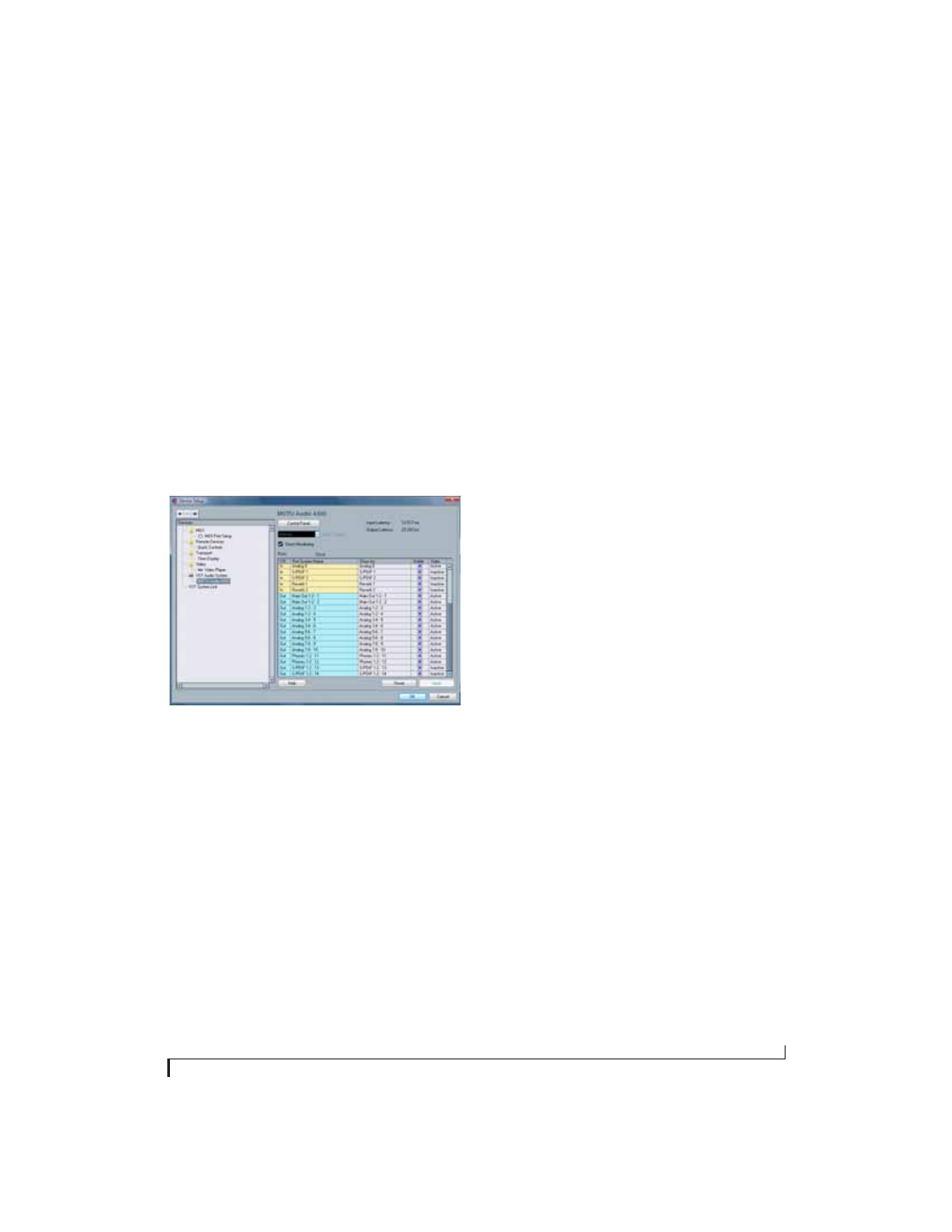Reverb return, Viewing and managing ultralitemk3 outputs, The “phones 1-2” output – MOTU UltraLite-mk3 - Hybrid FireWire/USB 2.0 Audio & MIDI Interface User Manual
Page 47: Changing ultralitemk3 settings, Working with cuemix fx mixing and effects, Synchronization, Midi i/o via the ultralitemk3 midi ports, Viewing and managing ultralite-mk3 outputs, Changing ultralite-mk3 settings, Midi i/o via the ultralite-mk3 midi ports

C U B A S E , N U E N D O , L I V E A N D O T H E R A S I O S O F T W A R E
47
☛
Warning: the Return inputs can cause
feedback loops! DO NOT assign this input to a
track that shares the same UltraLite-mk3 output
pair as the returns.
Reverb return
The UltraLite-mk3 also supplies a return to your
host software that carries the output of its reverb
processor. This return can be used for any purpose
you wish.
VIEWING AND MANAGING ULTRALITE-MK3
OUTPUTS
To view and manage UltraLite-mk3 outputs, scroll
down
below the inputs to see them
(Figure 7-6).
Figure 7-6: Working with UltraLite-mk3 outputs in Nuendo or
Cubase.
The “Phones 1-2” output
If you’ve chosen to treat the UltraLite-mk3
headphones as an independent output, you’ll see
Phones 1-2
as a UltraLite-mk3 output destination.
Audio tracks assigned to this output pair will be
heard on the headphone jack only. For further
explanation, see “Phones” on page 44.
CHANGING ULTRALITE-MK3 SETTINGS
To change the UltraLite-mk3 settings at any time,
go to the Device Setup window in Nuendo or
Cubase and click the Control Panel button, as
shown in Figure 7-6 on page 47. Be sure to click the
Reset button after making any changes.
PROCESSING LIVE INPUTS WITH HOST-
BASED VST PLUG-INS
If you patch a live input (such as MIDI synthesizer)
through a VST plug-in effect in Cubase, you might
hear a slight delay. There are several ways to reduce
this delay. For details, see chapter 9, “Reducing
Monitoring Latency” (page 55).
WORKING WITH CUEMIX FX MIXING AND
EFFECTS
The UltraLite-mk3 provides powerful external
mixing, EQ, compression and reverb, which you
can operate hand-in-hand with your host
software’s complete mixing environment. For
example, the UltraLite-mk3 can serve as a monitor
mixer routing channels to musicians, or it can
serve as an integrated extension of your Cubase/
Nuendo mixing environment. If you program an
UltraLite-mk3 mixing and processing
configuration that goes hand in hand with your
Cubase/Nuendo project, be sure to use the file save
features in CueMix FX to save the UltraLite-mk3
settings as a file in your Cubase/Nuendo project
folder for instant recall of all settings. See
chapter 10, “CueMix FX” (page 61) for complete
details.
SYNCHRONIZATION
Together, Cubase (or Nuendo) and the
UltraLite-mk3 have the ability to resolve directly to
SMPTE time code, without an additional time
code synchronizer. See “Syncing to SMPTE time
code” on page 106.
MIDI I/O VIA THE ULTRALITE-MK3 MIDI
PORTS
Once you’ve run the UltraLite-mk3 software
installer as explained in “Installing the
UltraLite-mk3 software” on page 15, the
UltraLite-mk3 MIDI ports will appear as a MIDI
input source and output destination in your host
software’s MIDI input and output menus.